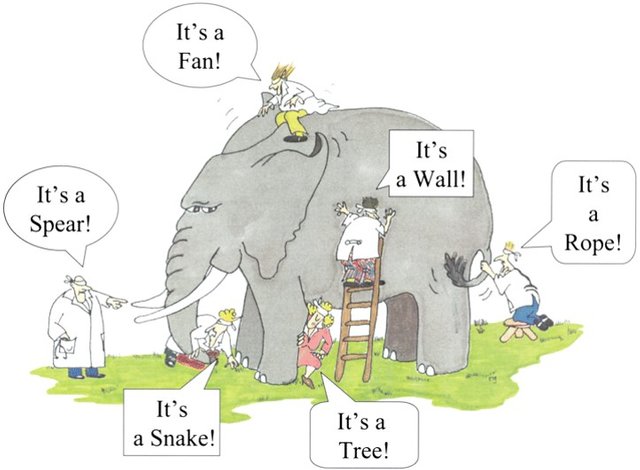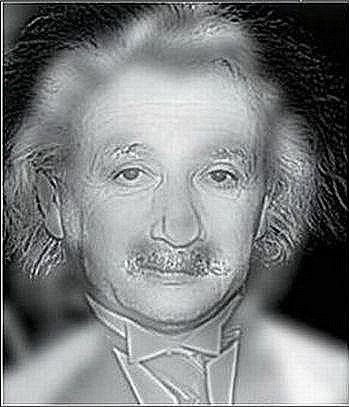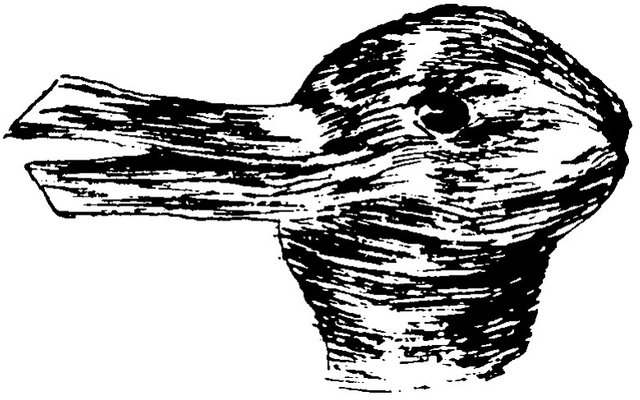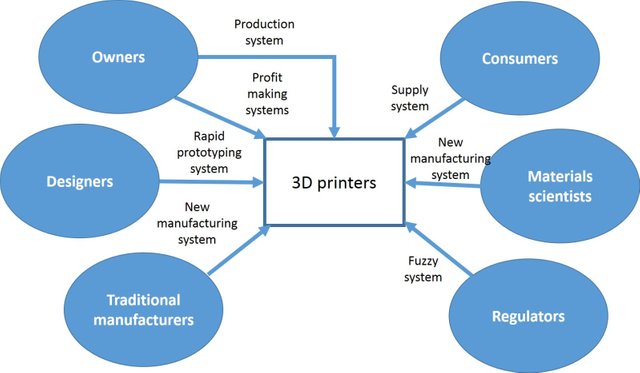Multifinality analysis of 3d printing ecosystem - What is multifinality and why is it important in 3d printing?
Hi steemians, this post is edited from an original paper on multifinality of 3d printing ecosystem during my PhD student days. So it is more academic. Will be back with a blog format in the next post. Hope you enjoy this one.
What is multifinality and the importance of it?
In systems thinking, multifinality means given the same inputs in a scenario, there can be multiple system outcomes which are resulted from diverging and differentiated multiple objectives of the involved stakeholders. It is thus crucial to understand and extract the possible perspectives derived from stakeholders. These stakeholders have the potential to change the ecosystem and hence generating new business models. Adopting such thinking is useful to gain insights on how different kinds of changes may impact the business models and/or transform an ecosystem. A few examples below help to illustrate the importance of revealing different perspectives.

Basically, stakeholders have different perspectives and hence react differently according to their objectives. See the 2 pictures and you will quickly get what i meant.


A good example which is often used is a "supermarket".
From the owners’ perspectives, a supermarket is viewed as a “profit generating system”. However, from the customers’ perspective, a super market is viewed as “groceries supply system”. This means that given the same item, different stakeholders have different perspectives and needs which results in different objectives. This is important because any change in customers’ needs (stimulus) can drastically change the system outcome and the supermarket owners have to respond accordingly.
Multifinality of 3D Printing technology
3d printer is not only just a sole DIY equipment; it can be the center of an ecosystem. Currently, the ecosystem consists of other complementary technologies such as the internet, digitization and design software, 3d scanning, which may or may not already exist before the times of 3d printing.

Owners and consumers
3d printers owners can view the 3D printers either as a profit making system or a production system, or even both. The rationale comes from the fact that anyone who owns a 3d printer can be both a manufacturer and consumer. Owners are also sometimes the designers who used 3d printer as a rapid prototyping system.
Materials Scientists and traditional manufacturers
A particular printing technology trend is development of new and “smart” materials. New materials, especially composite materials have more potential in enhancing product functions and performances. Being a “smart” material means that it is able to change its shape or size upon meeting a particular stimulus. The process of change takes time and this technology takes on the form of a new name - 4D printing.
Lock-in effect, complementary and efficiency are important drivers in business value creation.These drivers can also apply in 3d printing. Lock-in effect exists in 3D Printing in the form of filament inputs to the customers. Currently, most 3D printers can only be used with the filaments supplied by the printers manufacturers. But that is changing as there would be more research and development, new manufacturers coming into the ballgame and thus driving the prices of such filament lower. This creates more value for the customers and filament makers but not for the owners. Therefore in the multifinality point of view, owners should be acutely aware of the possibility for part makers to manufacture the form of materials input (e.g. filament).
Designers
Complementary technologies such as internet, design software and digitalisation are also the few drivers. In fact, imaging researchers and product designers have been working on 3D scanner apps on mobile phones and professional design software. This means that any customers who are not users of specialized design software such as Autocad, are still able to take 3D scans of objects, obtain design files such as STL files and upload them to 3d printers easily. Such scanning devices also add on to the efficiency of process design since the product design cycle time is shortened.
Regulators
Regulators see 3D printing as a fuzzy system. That is because even though they view intellectual property legislations and weapons fabrication (3d printing can be used to print a gun) as essential for 3D printing but they are also careful not to hinder the innovations in the industry, which can possibly slow down the industry growth. That being said, from the multifinality perspective, it is still important to engage the regulators closely to understand point of views and anticipate regulation changes.
To conclude...
The mapping of such multifinality is interesting for new technologies and helps to extract common perspectives and objectives of the various stakeholders to form an ecosystem. When different perspectives are better understood and visualised, it is possible to brainstorm for possible and future collaborations in the ecosystem.
Follow @coinbitgold blog in #3dprinting, 4dprinting, science, academia and technology.
Very good post. This "multifinality" logic was instrumental in the framework of the "ontology for technology transfer" project described here: http://bit.ly/2c9Pp1T
In that context, one can see in a very concrete way that the technology portfolio from the ATLAS experiment at CERN is "seen" differently (and must be presented differently at the taxonomy level) by different classes of stakeholders, e.g. ATLAS scientists vs. industry...
Thanks! Indeed. The concept is also instrumental in managing research and looking for common partners to work together
I do not think the blog format is necessary. This was very clear and very well written!
I agree
I agree too
Thanks!
Good info. I use 3d printing to produce my jewelry designs.
nice!
hopped over to your blog!
very good what you have written congratulations
Thanks!
I think there will be a time in the future where every household owns a 3-D printer... They truly are revolutionary
Good post as always @coinbitgold. Keep it up!
Thanks!
This is amazing! I was missing your posts :)
Thanks! Will try to post more often :-)